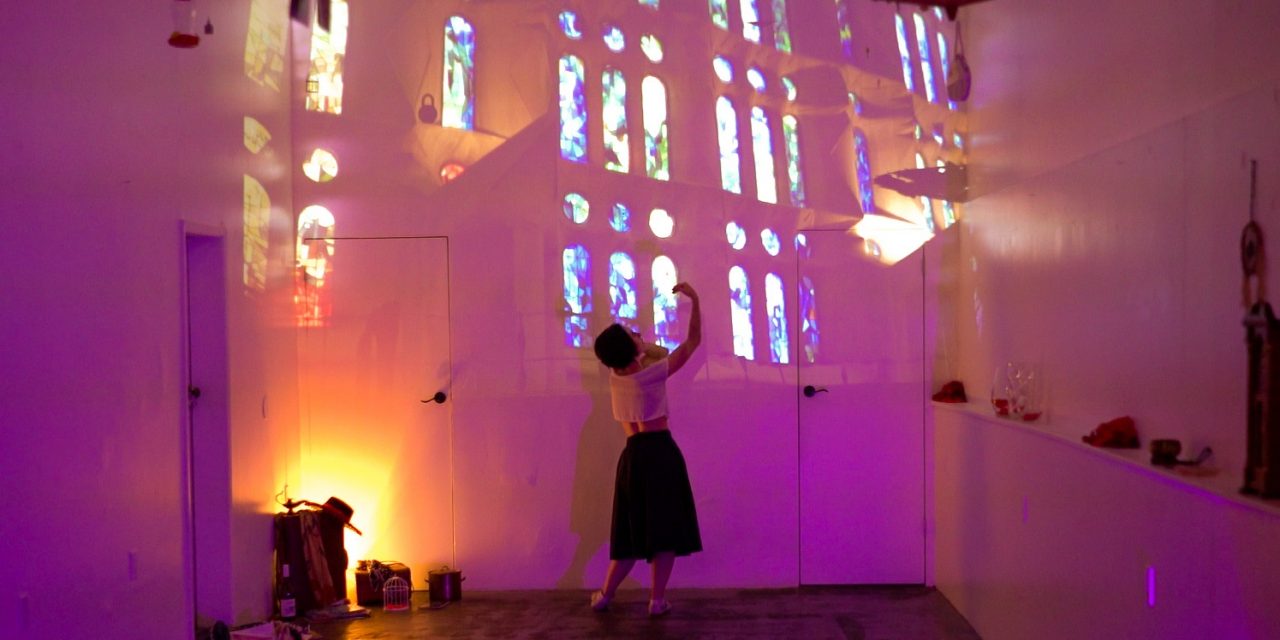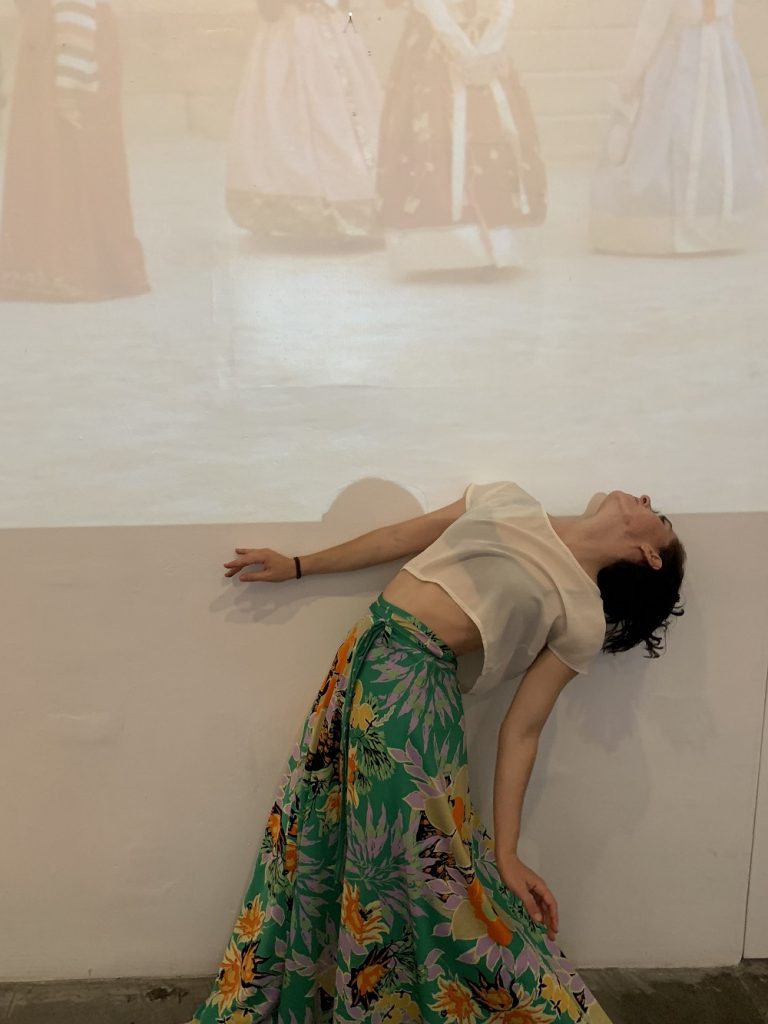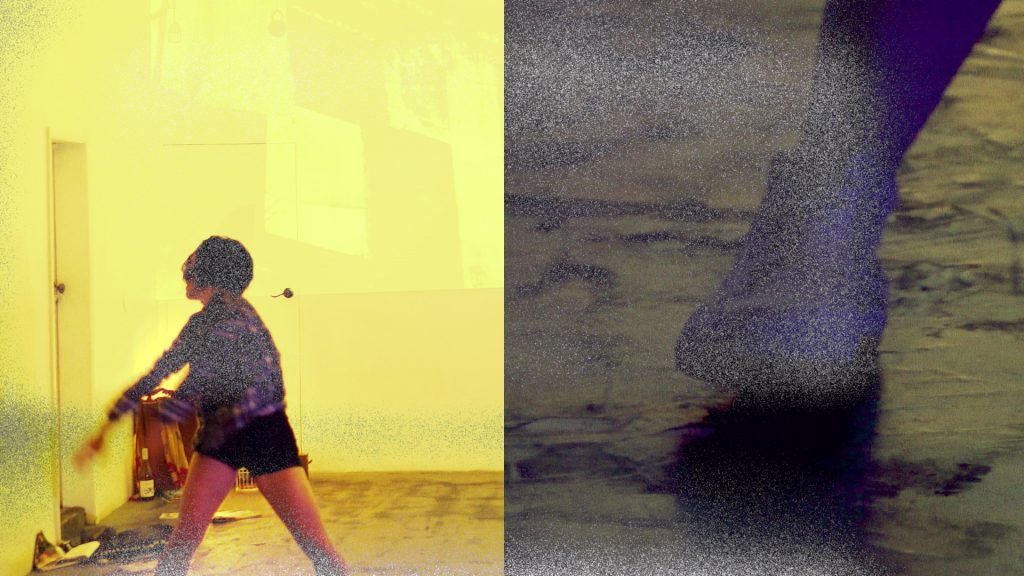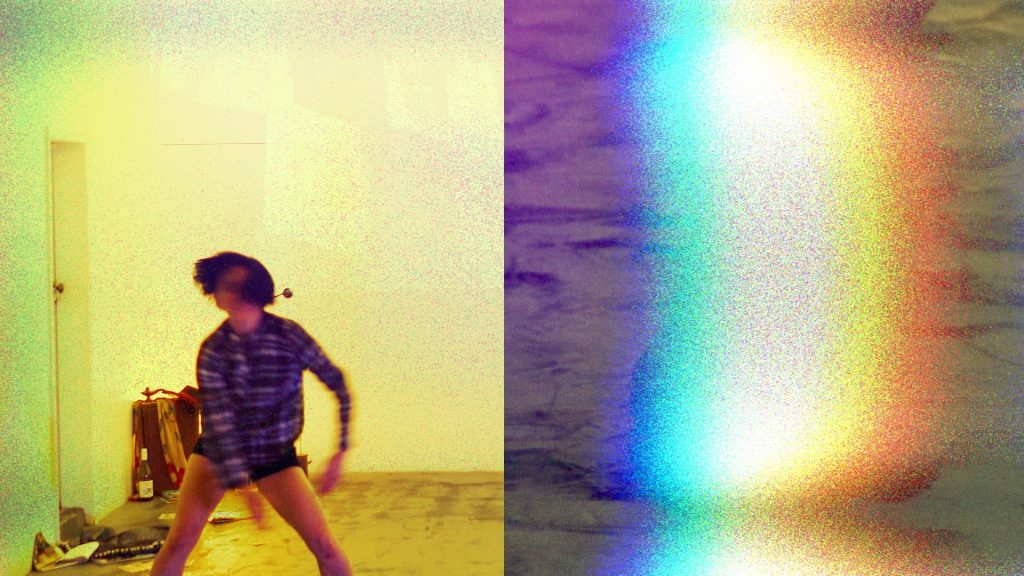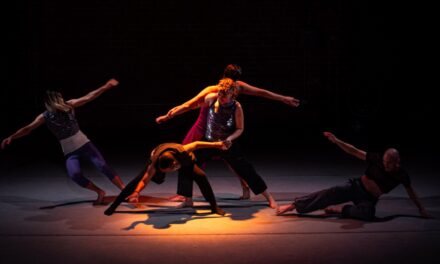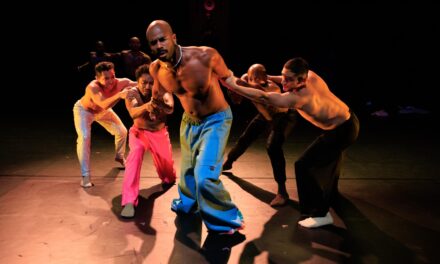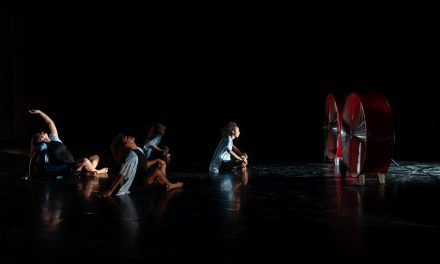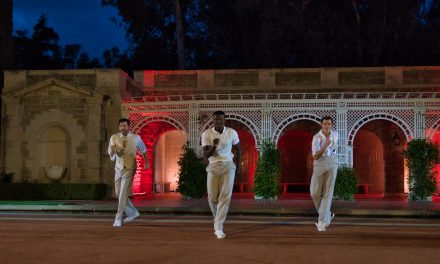Between May 8 and 9, Radiant Space became a haven of tranquility away from Hollywood’s bustling streets with its presentation of Olivia Mia Orozco’s Toolbox: A Dance Theater Performance, her latest choreographed work. Originally premiering on April 10 and 11 this piece is an expansion of Orozco’s Too Much, first performed two years ago by the artist herself at Human Resources LA as part of a dance show called Untamed. More cathartic than its first rendition, Toolbox is a multi-faceted description of a complicated emotional journey beautifully depicted by soloist Julienne Mackey.
A strong smell of palo santo ( a wild tree native from Yucatán Peninsula to Peru and Venezuela) was the first thing to shock the senses as the doors opened and the audience was led inside the rectangular room. The scent almost completely eclipsed the light wafts of lavender and other herbal aromas emitted by several burning candles assembled along a built-in ledge on the right wall.
An assortment of curiosities hung from the ceiling—mementos from Orozco’s adventures, such as East Asian parasols and bird cages. The seats were covered in South American–style blankets and separated from the stage with faux rose petals, which added a further sense of warmth to the room. Other items such as vases, a full-length mirror, strewn clothing, and a rose brimmed umbrella lay in corners throughout the space, indistinguishable as either props or pure decoration. The look was completed with a giant projection of a European-style building illuminated at an angle along the back of the studio.
Toolbox was an experience that involved all the senses; adding to sight and smell was taste, initiated with everyone receiving a glass of white wine before the bright lighting scheme was replaced by a purple glow.
The show began with Mackey emerging from a door at the rear, looking forlorn. Plopping down on the floor, she flipped through several magazines before writing something down, the root of her sorrow never being made clear, but solidifying the first section of the show as being more acting than dance-based, all performed to silence.
Displaying an overwhelming amount of emotion, Mackey’s movement increased when she began dragging her body across the space, filling it with her devastation. Barely making it a few inches off the ground, she hung low, scraping her limbs against the walls. Her chaotic steps grew more uncertain, tentatively placed on the ground with each new turn. Doubt gave way to rage, exposing inner frustration, disappointment, and a hint of self-loathing as Mackey curved her back, bursting to jump out of her skin before settling onto the floor unmoving and with a pained expression on her face.
Mackey did not initially react when music began streaming in through the speakers, instead continuing to lay on her back, looking defeated. Once a few moments had passed however, she seemed to be gripped by a new determination that led her to thrust herself back upward before bowing at the waist and rounding her arms and swinging them side-to-side as if rocking a baby. The movement’s repetitive style was comforting, as were Mackey’s back-bending stretches, now filled with reconstruction and purpose rather than agony. As her arms wavered through the air, she appeared to be climbing a tree, growing emotionally and spiritually taller with every grappling pull.
The background projection began playing clips from Orozco’s international travels, mostly featuring locations in Europe and Asia—a sort of East meets West motif that tied in well with the studio’s décor. Mackey spent time staring at the images before they leapt to life, then placed herself along the back wall, maneuvering her body along the contours of the buildings and shadows that appeared on the video.
A healing energy took place, conveyed by softer music, and a visible shift in choreography with more instances of upward reaching and happy twirls. Leading this new journey of positivity were speeches from two different spiritual podcasts about the mind-body connection and human beings’ need to feel pain in order feel alive and improve their state of being—words that reflected Mackey’s character’s elevating psyche.
Clothing played a large role in Mackey’s transformation. The shifts went from grungy looking outfits hastily thrown on without looking into the mirror, to carefully fitted, airier pieces. A plain white crop top was covered by a navy-blue flannel shirt in the dramatic first scene. Jean shorts were exchanged for longer skirts that grew lighter in color, with her last look—the white T-shirt and a flowy, green wrap-around skirt—reflecting the lifting of a weight off her shoulders and allowing for smoother movement.
Dressed in her final outfit, Mackey added the last piece of sensory stimulation to her performance—unique sound, which she created with an array of old-world instruments such as rain sticks and Indian singing bowls. As she cleansed herself with the natural tones, she extended the courtesy toward the audience, washing the audience with it as well, pushing the instruments toward the spectators while erasing the flower petal division on the floor with her feet.
Orozco’s formation of a united space ended the piece with a purging catharsis easily felt in the studio’s intimate setting. Better developed than Too Much, Toolbox lived up to its name with its combination of dance with multiple elements to create a soothing piece of performance art.
For more information about Olivia Mia Orozco, click here.
Featured image: Toolbox: A Dance Theater by Olivia Mia Orozco – Photo by Olivia Mia Orozco.

